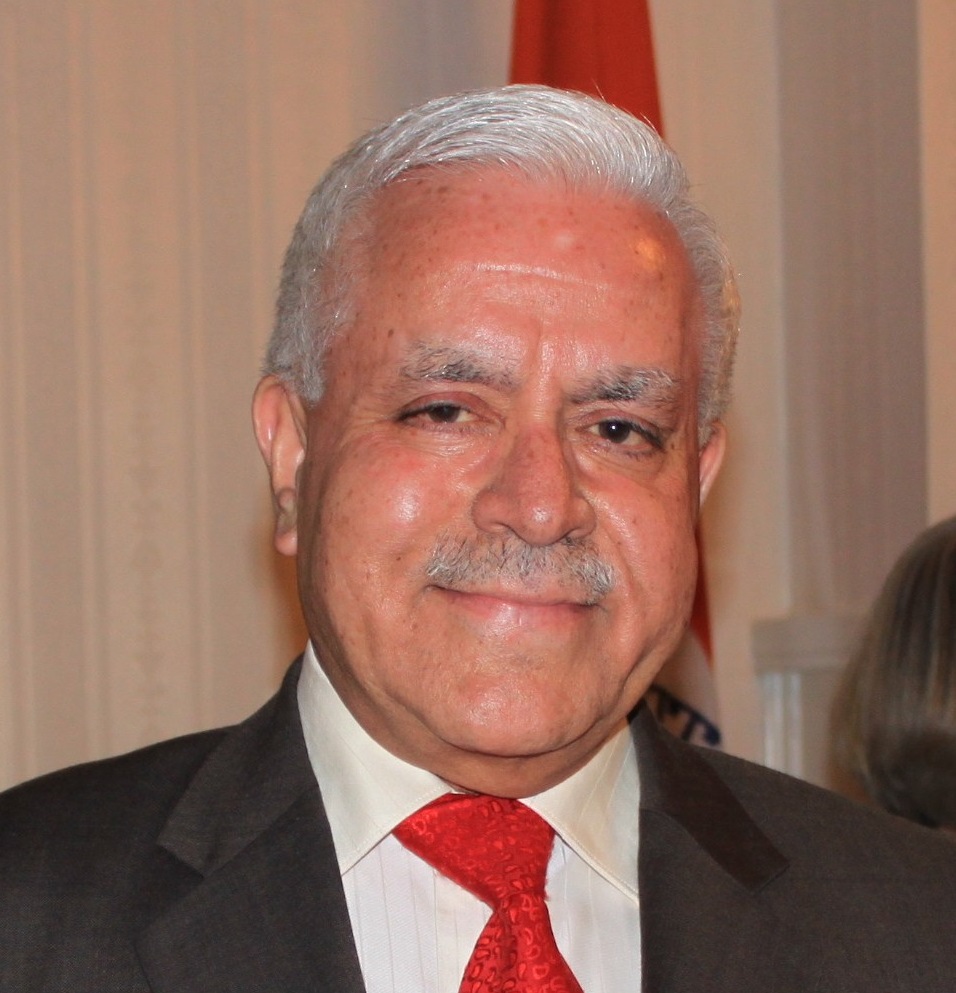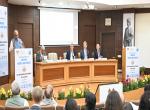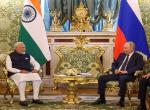Introduction
India-US relations have been in a sweet spot since the last twenty-five years starting with the visit of US President Bill Clinton to India in March, 2000. There has been a bipartisan consensus in both India and the US regarding stronger and more dynamic ties between the two nations.
There was considerable anxiety in most countries in the world at the election of Donald Trump as the 47th President of the United States. This increased several fold looking at the flurry of Executive Orders Trump signed and the aggressive statements made by him immediately after his inauguration on domestic and foreign policy issues including illegal migration, tariffs, China, Canada, Mexico, Panama Canal, Greenland etc. The reason for global apprehension is because Trump is known to be unpredictable. In his First Term, Trump was seen to be unsure primarily because his election in 2016 came as a shock, not only to the world but to himself also.
His decisive win in 2024 has imbued Trump with greater confidence to carry through his Agenda to ‘’Make America Great Again’’. He has nominated his loyalists to all significant positions in his Cabinet.
India has felt somewhat reassured because of the underlying structural factors binding India and USA and the cordial relations between PM Modi and President Trump. This is reflected in the expected early visit and meeting between PM Modi and Trump. PM Modi would be one of the first world leaders to visit the White House at Trump’s invitation when he goes to the US, as reported on 12th-14th February, 2025. India is sanguine it will be able to effectively navigate the relationship to make it stronger.
This sentiment was evident in recent conversations between Modi and Trump, especially on 27th January, 2025 which happened soon after Trump’s inauguration. Referring to this warm and friendly conversation, PM Modi in his message on X stated that the two countries “are committed to a mutually beneficial and trusted partnership. We will work together for the welfare of our people and towards global peace, prosperity, and security." This was also the message that EAM Dr S Jaishankar gave while Addressing a Press Conference in Washington DC on 22nd January, after participating in President Trump’s inauguration. Jaishankar said that his interactions with the incoming Trump Administration had led him to believe that there was ‘’an agreement, a consensus between us that we need to be bolder, we need to be bigger, we need to be more ambitious.’’
It however, needs to be kept in mind that 2025 is not 2017. The world has changed and so also has Trump. Trump 2.0 is much more self-confident, self-assured, unencumbered and impulsive than he was eight years ago.
India-US Relations in Trump 1.0
During Donald Trump’s first term as President (2017-21), India emerged as an indispensable partner to the United States. The Trump administration backed India on the issue of terrorism. It supported designation of Jaish-e-Mohammed chief as a global terrorist by the UN Security Council and grey listing of Pakistan by the Financial Action Task force (FATF). India-US defence ties also received a major boost as India was elevated to Tier 1 of the Strategic Trade Authorization (STA) which is a license exception that allows the export, re-export, and transfer of certain items without a license. This placed India at par with NATO allies of the US for import of sensitive technologies and for speeding up the sale of high-tech defence and non-defence products that are otherwise subject to strict controls and licensing. This led to India’s defence procurement from the US climbing to $18 billion in 2019.
On the geostrategic front, Trump was the first US President to identify China as a ‘’strategic competitor’’ (China took great offense at this nomenclature). This resulted in the resurrection of the Quad (Australia, India, Japan, USA) at senior official level in November, 2017 on the margins of the East Asia Summit in Manila, Philippines. It also led to the naming of the US Pacific Command as the US Indo-Pacific Command, as also rechristening of Asia-Pacific as the Indo-Pacific. During this period, India signed the two remaining Foundational Defense Agreements viz. Communications Compatibility and Security Agreement (COMCASA) in 2018, and the long pending Basic Exchange and Cooperation Agreement (BECA) for geo-spatial cooperation in 2020. To foster the energy sector, Trump 1.0 witnessed the launch of bilateral Strategic Energy Partnership in 2018. This led to India’s increased import of crude and LNG from the US. The period also saw two major public events in which both PM Modi and President Trump participated viz. the ‘’Howdy Modi’’ gathering organized by the Indian Diaspora in Houston, Texas in September, 2019, and ‘’Namaste Trump’’ in Ahmedabad in February, 2020.
However, the bilateral relations were also marked by challenges like differences over tariff regime, issues related to immigration, Trump’s offer to mediate between India and Pakistan on the Kashmir issue etc.
Likely Contours of India-US Ties in Trump 2.0
Some issues which could occupy center-stage in India-US relations, particularly during PM Modi’s forthcoming visit to the US, are given below:
Illegal Migration: India has categorically stated that it does not support its nationals staying illegally in the US or any other country. As in the past, it would accept those who are staying in the US illegally, once their identity as Indian citizens is confirmed. The first planeload of Indian deportees in Trump 2.0 arrived in India on 5th February, 2025.
H1B Visas: Trump and Elon Musk have spoken out forcefully in favour of legal migration of skilled professionals. Some opposition to this is visible from the MAGA support base but Trump should be able to overcome this. There has been some misuse of the H1B provisions. India will welcome suitable reforms so that H1B is used genuinely for the intended purpose.
Birthright Citizenship: US Constitution grants citizenship to any person born in the US. Withdrawal of this facility will affect several Indian H1B professionals. Trump Administration’s decision on this issue has been challenged in several US courts. The future of this provision is uncertain. India may not expend its political capital on this issue.
Tariffs and Trade: Trump has called India the ‘’Tariff King/Tariff Abuser’’ and threatened to take action against much higher tariffs it imposes on US products than the US does on Indian imports. India had a trade surplus of $36.74 billion with US in 2023-24. India is 13th in list of countries with trade surplus with the US. China, Mexico, Vietnam, Ireland and several others have much higher trade surpluses with US. However, India is in cross hairs of Trump on account of its higher tariffs. India should offer some concrete concessions for technologically advanced products in which US has significant commercial interest. India fired the first salvo by reducing import duties on Harley Davidson (which was of particular interest to Trump in his first Term) and high-end luxury cars (read Tesla) in the Budget on 1st February, 2025. Visit by PM Modi to US in mid-February, 2025 would be an eminently useful opportunity to stay ahead of the curve and come to an understanding in the initial stages of Trump 2.0 on this sensitive issue. In Trump 1.0, discussions were held on a mini-Trade Deal. These could be revived to ensure that the issue does not boil over.
Several Economists have recommended that India should significantly rationalize its tariff structure to integrate itself with Global Value and Supply Chains. A voluntary reduction in tariffs while ensuring protection to sensitive sectors like agriculture, dairy etc., would provide a strong fillip to the economy which has been faltering in recent months.
China: Since his election, Trump has been sending mixed signals regarding China. These relate to retraction of his threat to impose 60% tariffs on Chinese goods, invitation to Chinese President Xi Jinping to his inauguration, turnaround on TikTok, his warm conversation with Xi Jinping to ‘’do everything possible to make the World more peaceful and safe!" This indicates Trump’s desire to have a positive, working relationship with China.
It appears that to strengthen his negotiating leverage, Trump has imposed 10% (as against 60% he had threatened earlier) tariffs on China. This could provide space for Indian products in the US market. Trump’s pushback could also result in foreign investments locating to other destinations. India should be ready to not miss out on China +1 Investment opportunity this time.
Even if US gets a satisfactory Trade Deal with China, its relations are likely to be contentious because China’s end objective is to displace US as the hegemon of the world. China will not take its eyes off this goal, irrespective of what tactical arrangements it enters into with the US.
India should closely watch the evolving ties between USA and China and while further expanding its relations with US, work towards non-confrontational relations with China.
Defence: Trump has pressed for greater import of US security equipment by India. In recent years the US has emerged as the second largest supplier with inventory of above US$25 billion. India should insist on greater technology transfer and more joint development and production of sophisticated systems and platforms.
Technology: India and US embarked on an ambitious collaboration in critical and emerging technologies during Biden Administration, specifically in semiconductor manufacture in India with support of several US companies. Mike Waltz, the new National Security Adviser is the point person for this. Waltz understands India well having been co-Chair of India Caucus. Cooperation in this vital sector should not only continue but also be expanded. This is likely to be a critical theme of deliberations during PM Modi’s upcoming visit.
Geopolitics: The Indo-Pacific and Quad: First meeting of Quad foreign ministers was held one day after President Trump’s inauguration. Collaboration towards a free, open and prosperous Indo-Pacific and ensuring freedom of navigation and overflights in Indo-Pacific would be a priority issue for Trump Administration. Next Quad Summit will take place in India.
It is understood that Trump wishes to quickly disengage from the conflicts in West Asia and Europe so that he can devote full attention to developments in the Indo-Pacific. Pressure on China against its aggressive policies in South and East China Seas and elsewhere will continue unabated. Notwithstanding the initial conflicting signals on China by Trump, China will remain a significant ‘’strategic competitor’’ for the US.
Conclusion
India is confident it will be able to steer India-US ties on an upward trajectory during Trump 2.0. This is reflected in the warm and friendly conversation between PM Modi and President Trump on 27th January. Convergence on bilateral, regional and global issues is much greater than divergences on some aspects. India would be ready to have intense negotiations on trade, tariffs, immigration, defense procurement and other matters to arrive at mutually advantageous win-win solutions.
India is sanguine that Trump Administration will put its Deep State which has been interfering in India’s internal affairs on a tight leash. Also, there will be greater meeting of mind on regional issues particularly on rise of Islamic fundamentalism in India’s neighbourhood, especially in Bangladesh. India will however need to be vigilant, alert and nimble to safeguard its core interests of security, stability and well-being.
India-US relations are poised to advance rapidly in the foreseeable future, and be a force for bilateral and global peace, security and prosperity. The imminent visit by PM Modi to Washington DC will be an optimal opportunity to navigate the bilateral ties to fresh heights of cooperation and partnership.
(The paper is the author’s individual scholastic articulation. The author certifies that the article/paper is original in content, unpublished and it has not been submitted for publication/web upload elsewhere, and that the facts and figures quoted are duly referenced, as needed, and are believed to be correct). (The paper does not necessarily represent the organisational stance... More >>
Image Source: https://www.pmindia.gov.in/wp-content/uploads/2020/02/H2020022586228.jpg











Post new comment